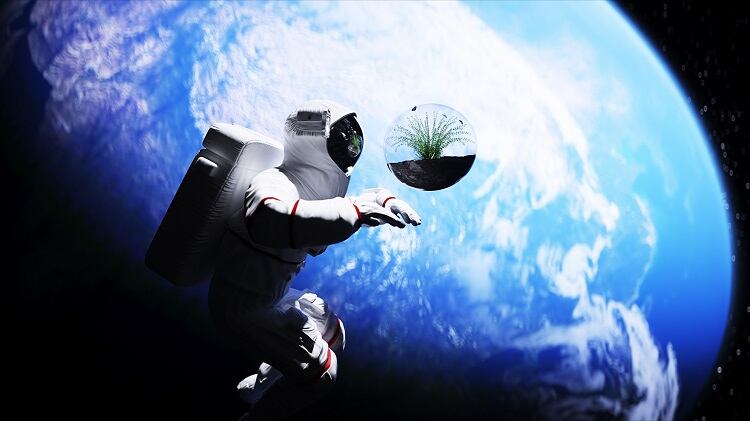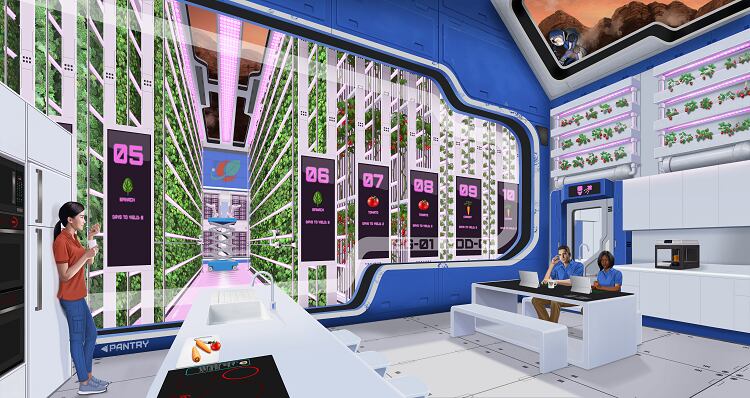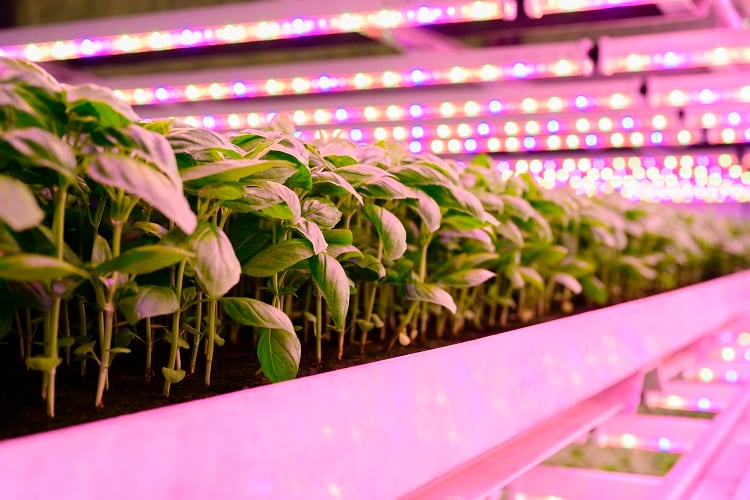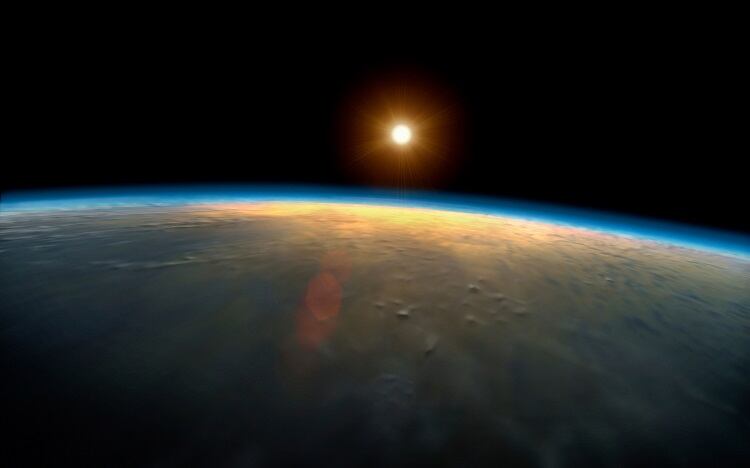In August 2023, scientists released a study exploring space-controlled environment agriculture (SpaCEA), an extension of the existing terrestrial controlled environment agriculture (CEA) production method. Published in the Nature Food journal, the researchers found that SpaCE offers pathways to improve CEA’s sustainability on Earth.
In the study, the researchers anticipated that CEA will have an increasing presence in food production due to the important role it plays in food growth. However, as the production method requires substantial amounts of energy and resources, and lacks profitability, the researchers suggest SpaCE offers sustainability improvements.
Seeking space-like solutions
The aim of exploring SpaCE is to construct CEA systems that are intrinsically circular. SpaCE builds on CEA by making changes to the agricultural method's design and optimisation.
Utilising life cycle analysis tools to optimise the application of natural or electrical light, power, nutrients and infrastructure in a CEA or SpaCEA system, producers can create more circular food production systems. These tools can also help steer research and development (R&D) in food production subsystems that lead to positive environmental advantages, the study’s scientists state.
By using space to showcase CEA food-growing technologies, SpaCEA can improve perceptions of terrestrial CEA on the globe’s food production efforts, researchers put forward. Placing a significant focus on SpaCEA development is an efficient way to address the existing resource and energy-heavy challenges associated with traditional CEA.
The study’s findings, which state that SpaCEA needs to have strong resource efficiency and design circularity, may provide production opportunities for global manufacturers.
SpaCEA obstacles
Challenges exist for producers and the wider food industry to adopt SpaCEA. However, there are considerable similarities between SpaCEA and more ‘traditional’ CEA. “If you can grow plants in a Canadian snow bank, you are pretty far along to being able to grow plants on the Moon,” Dr Matthew Bamsey, Senior Manager of Advanced Concepts and Future Missions at Canadian Space Agency told FoodNavigator.
The CSA’s investigations in space must have application to benefit the daily lives of Canadians, says Dr Bamsey. “Learning about how to produce food in space will benefit food production on Earth, particularly in remote and harsh environments such as Canada’ North,” Dr Bamsey adds.
For example, the CSA is working with other organisations and the community of Gjoa Haven in the Naurvik Initiative to develop a community-led hydroponic food production system. Using almost exclusively renewable energy sources such as wind and solar the project seeks to find solutions to grow fresh food sustainably throughout the year.
The CSA, Impact Canada and NASA teamed up to launch the Deep Space Food Challenge. They invited participants to submit their best ideas to apply and develop ways to feed future astronauts while considering how their solutions can provide terrestrial benefits. The Agency is now in Phase 3 of this challenge, and the four finalist teams are developing prototypes of their systems.
Collaboration continues between the space and agricultural technology sectors to further opportunities for idea generation in this food production intersection. “The challenge of designing things for space can spur new ideas and possibly bring new players into the CEA domain,” says Dr Bamsey.
Lessons from space
SpaCEA progresses exploration beyond traditional terrestrial CEA. “For space, everything must be designed to be low mass, low volume, low power and highly reliable,” Dr Bamsey told this publication. These conditions put engineers and scientists in a different mindset.
Researchers, as a result, can stimulate new ideas that lead to concepts that maximise the number of green items, such as plants and food produced, for the minimum input amount of resources like power and consumables.
“Such efficient and reliable systems will be critical as astronaut missions become longer and longer and as people explore further and further away from Earth where resupply becomes even more difficult,” Dr Bamsey shares.
Ongoing work into SpaCE builds upon existing findings. In 2016, the European Commission published the CEADSE (Controlled Environment Agriculture Development for Space and Earth) project’s final report. The CEADSE project was a European Union (EU) Marie-Curie grant that provided funding for postdoctoral research. Dr Bamsey conducted his research at the German Aerospace Center (DLR). The CEADSE project and Dr Bamsey’s research aimed to develop a greenhouse at the German Antarctic Neumayer Station III to test technologies that could one day provide food for future astronauts.
During one of his initial student internships at the Canadian Space Agency (CSA), Dr Bamsey worked on the Arthur Clarke Mars Greenhouse project. CSA was working with other partners to operate a greenhouse on Devon Island in the High Canadian Arctic.
Since that time, CSA and the German Aerospace Center have been in regular discussion about future opportunities in the domain of SpaCEA and to pursue work in food production.
Sourced From: Nature Food
'Space controlled environment agriculture offers pathways to improve the sustainability of controlled environmental agriculture on Earth’
Published on: 10 August 2023
Doi: https://doi.org/10.1038/s43016-023-00819-5
Authors: H. C. Wright, L. Fountain, A. Moschopoulos, A. J. Ryan, T. J. Daniell, D. C. Cullen, B. Shaughnessy & D. D. Cameron




